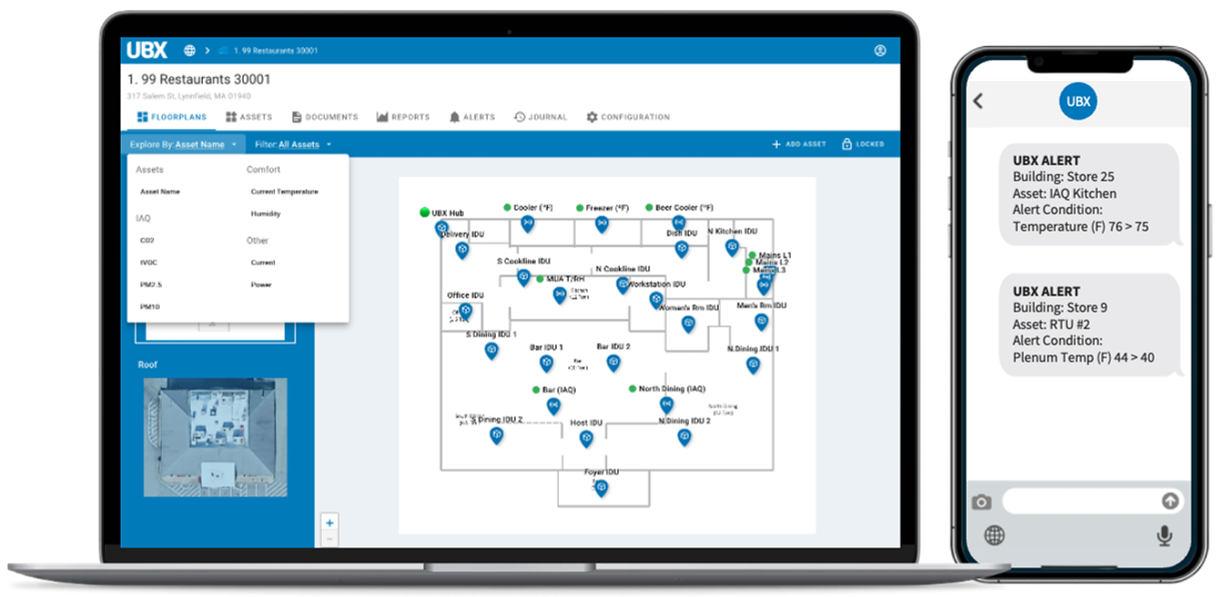
If you manage facilities for a multi-site business such as a quick-service restaurant chain, a regional bank, or a group of retail stores, facility management isn’t just a cost center. It directly influences customer experience, operational efficiency, and ultimately, your bottom line.
Every equipment failure, every degree of customer discomfort, and every hour spent chasing reactive maintenance translates to lost revenue. Yet most light-commercial facility teams are under-resourced, with individual technicians or managers responsible for multiple locations that must perform flawlessly day after day.
To meet these demands, teams need smarter, scalable tools optimized for Light commercial buildings.
Traditional BAS platforms were never designed for light-commercial buildings. They were engineered for massive facilities with dedicated building engineers and IT teams. For organizations managing tens or hundreds of smaller locations, these systems are too costly, too complex, and impossible to scale efficiently.
At the other end of the spectrum, consumer-grade smart thermostats work fine in a single location but quickly become unmanageable across multiple HVAC systems or buildings. Managing dozens or hundreds of disconnected thermostats is an operational nightmare.
What these teams need isn’t another complex building automation system. They need a platform that provides local intelligence at each facility plus portfolio-wide visibility all in one place through a single, unified view of their light-commercial operations.

Leading operators are rethinking how they manage distributed buildings. Instead of reacting to issues one at a time, site by site, they’re using connected devices and cloud-based platforms to see their entire portfolio in one view to transform how they maintain performance and control costs.
The key to the transformation is combining local intelligence with centralized oversight:
This shift enables light commercial facility teams to think and act like large ones and move from “firefighting” mode to strategic, data-driven operations.

For many organizations, the greatest constraint isn’t technology, it’s time and bandwidth. A handful of people are expected to keep dozens or hundreds of sites running optimally.
Modern platforms designed for light-commercial buildings like UBX now make that possible. Cloud-based control systems built around wireless sensors and long-range communication give teams portfolio-wide visibility without complex networking or requiring construction. From one dashboard, managers can:
Capabilities once reserved for large building facilities teams with enterprise BAS’s are now achievable for smaller light-commercial facilities teams.
A well-run facility doesn’t just save energy, it also protects revenue. Early detection of issues prevents spoilage, downtime, and costly service calls. Consistent comfort and uptime reinforce brand trust. And unified data empowers better strategic decisions about maintenance, staffing, and capital investment.
Ultimately, visibility across the portfolio enables facilities leaders to present facilities management not as overhead, but as operational assets that drive performance and profitability for the business.
Light-commercial facilities are the backbone of countless industries and they’re finally getting the digital infrastructure they deserve. The combination of wireless technology, cloud computing, and intelligent analytics is redefining what’s possible for small facility teams.
With smart building platforms like UBX, the future of light-commercial operations is clear: optimized locally, managed globally, and informed by data.
Ready to learn more?
Talk to one of our experts to learn how UBX can improve consistency, efficiency, and profitability across all your locations.
